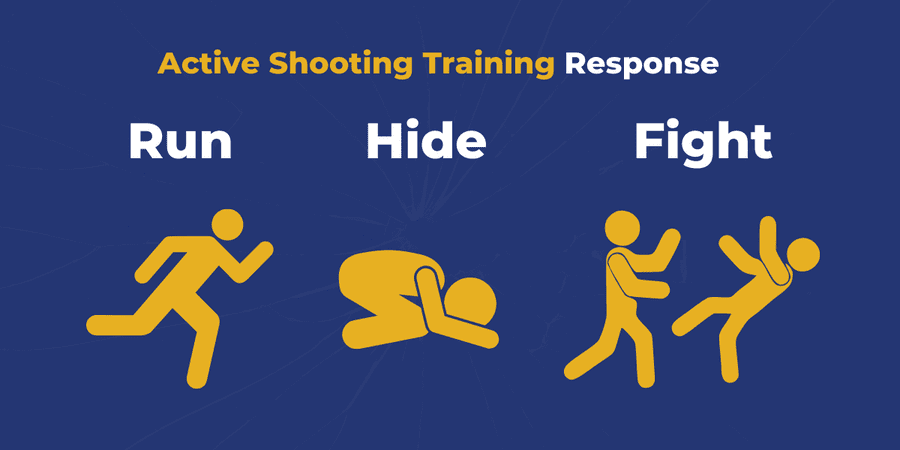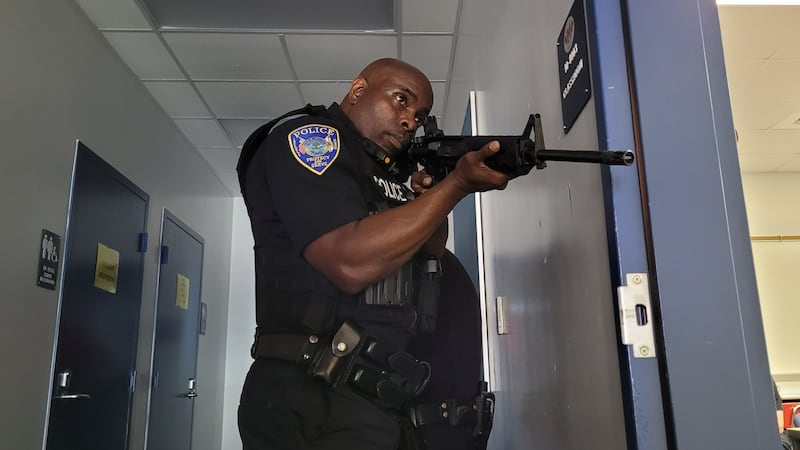Finest Practices for Implementing Active Shooter Training in Your Business
Finest Practices for Implementing Active Shooter Training in Your Business
Blog Article
Implementing Active Shooter Training: Ideal Practices for Producing a Safe and Prepared Community Setting
As neighborhoods confront the disturbing fact of energetic shooter cases, the application of detailed training programs comes to be vital. A successful method rests on not just the advancement of customized educational programs that attend to neighborhood risks however also the involvement of diverse stakeholders. By using a variety of training methods, areas can guarantee that all members are equipped with important skills. Nevertheless, the challenge depends on preserving a flexible framework that progresses with emerging threats. What are the crucial aspects that can change a standard training program into a durable version for community strength?

Recognizing the Need for Training
In an era marked by boosting cases of physical violence in public areas, understanding the requirement for energetic shooter training has never ever been more important. Comprehensive training campaigns can outfit participants with the understanding and skills to react emphatically.
Training promotes a feeling of empowerment and readiness, enabling individuals to really feel even more secure in their environments. The benefits of energetic shooter training extend beyond prompt response; they include improving communication methods and improving general safety procedures within companies.
Key Components of Effective Programs
Efficient active shooter training programs incorporate a number of key components that improve preparedness and response capacities. Comprehensive curriculum development is crucial, ensuring that training web content is appropriate, evidence-based, and customized to the specific requirements of the organization or neighborhood. This consists of comprehending the characteristics of energetic shooter occurrences and the mental influence on individuals entailed.
Second, reasonable training circumstances should be used to imitate possible circumstances, permitting participants to exercise decision-making and response techniques in a controlled setting. These drills facilitate muscle memory and build confidence among participants.
Third, a focus on interaction procedures is important. Establishing clear lines of communication among police, emergency situation -responders, and participants ensures coordinated feedbacks throughout a case. Normal updates and refresher training courses help keep communication paths clear and reliable.
Fourth, recurring examination and responses mechanisms ought to be incorporated into the training program - active shooter training. Evaluating the efficiency of training with individual responses and performance metrics enables constant renovation
Lastly, cultivating a society of security and preparedness within the neighborhood urges vigilance and aggressive measures, ensuring that individuals are not only skilled yet additionally participated in maintaining a safe environment.
Engaging Neighborhood Stakeholders

To effectively involve these stakeholders, it is vital to communicate the objectives and advantages of the training. Holding informative sessions can help clear up the training's objective, address worries, and outline the functions each stakeholder may play. Developing a stakeholder consultatory committee can help with Recommended Reading continuous discussion, enabling for varied point of views and understandings to be incorporated right into the training program.
Structure partnerships with neighborhood leaders and companies is additionally vital. Their assistance can improve outreach initiatives, increase engagement, and guarantee that training is tailored to the one-of-a-kind demands of the neighborhood. In addition, stakeholders can assist in disseminating information and sources, strengthening the message of security and preparedness.
Eventually, engaging area stakeholders not only strengthens the training effort however also grows a feeling of ownership amongst residents, resulting in a much more resistant and educated neighborhood efficient in responding effectively to prospective risks.
Educating Distribution Techniques
Using a range of training distribution approaches is important to fit the varied knowing designs and needs of participants in energetic shooter training programs (active shooter training). Efficient training can take a number of types, consisting of talks, hands-on simulations, on-line modules, and interactive workshops. Each approach offers an one-of-a-kind objective and can enhance the overall discovering experience

On the internet components offer adaptability and availability, making it possible for participants to learn at their very own pace. These can consist of video clips, tests, and conversations to gauge understanding. Interactive workshops urge group discussions and analytic, promoting team try these out effort and interaction skills.
Integrating a mixed technique that incorporates these techniques not only enriches the training experience however also ensures that participants are better prepared to respond efficiently in case of an energetic shooter circumstance (active shooter training). By attending to different learning choices, organizations can create a much more enlightened and receptive area
Continuous Evaluation and Renovation
Regular assessment and enhancement of energetic shooter training programs are vital to maintaining their significance and effectiveness. As risks advance, so have to the techniques and methodologies used in training. Constant examination makes sure that training web content shows the most current knowledge on active shooter events, incorporating lessons gained from recent events and readjusting for emerging trends.
To facilitate this process, organizations should establish comments devices that consist of participant analyses, professional reviews, and occurrence debriefs. Collecting data on individual performance during drills and workouts is important, as it highlights locations needing improvement and educates future training sessions. Furthermore, engaging with legislation enforcement and emergency situation -responders can supply beneficial insights right into the usefulness and applicability of training methods.
Regularly arranged testimonials of training materials and methods should be mandated, cultivating a setting of technology and flexibility. Organizations has to likewise encourage a society of continuous understanding, where team member feel empowered to recommend modifications based upon their experiences. By committing to constant evaluation and improvement, companies not only boost the performance of their energetic shooter training programs however also strengthen their overall dedication to safety and security and readiness within the community.
Final Thought
Finally, reliable application of energetic shooter training necessitates a thorough strategy that prioritizes area engagement and realistic simulations. By creating customized curricula, including diverse training approaches, and cultivating cooperation amongst stakeholders, areas can improve preparedness. Constant evaluation and responses systems are important for adjusting programs to arising hazards, consequently strengthening overall security. Inevitably, a commitment to ongoing training and improvement grows a society of watchfulness and preparedness, guaranteeing a safer atmosphere for all neighborhood members.
Report this page